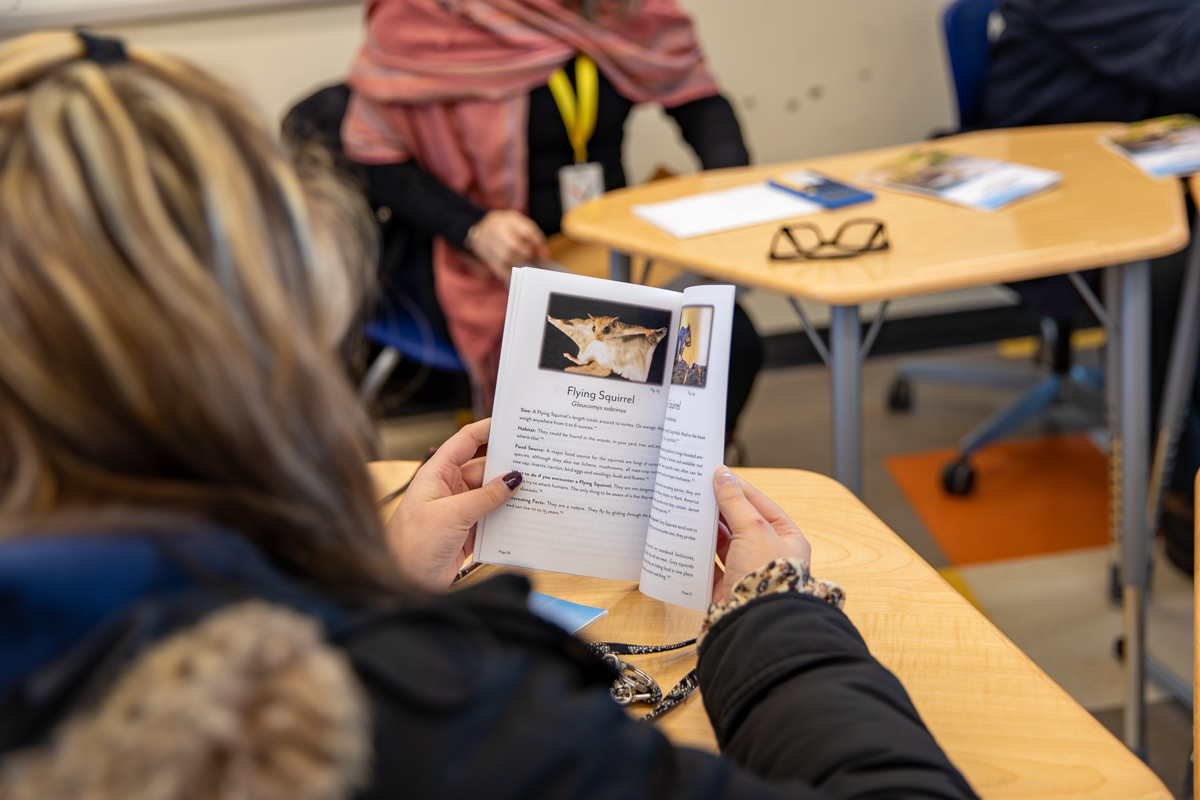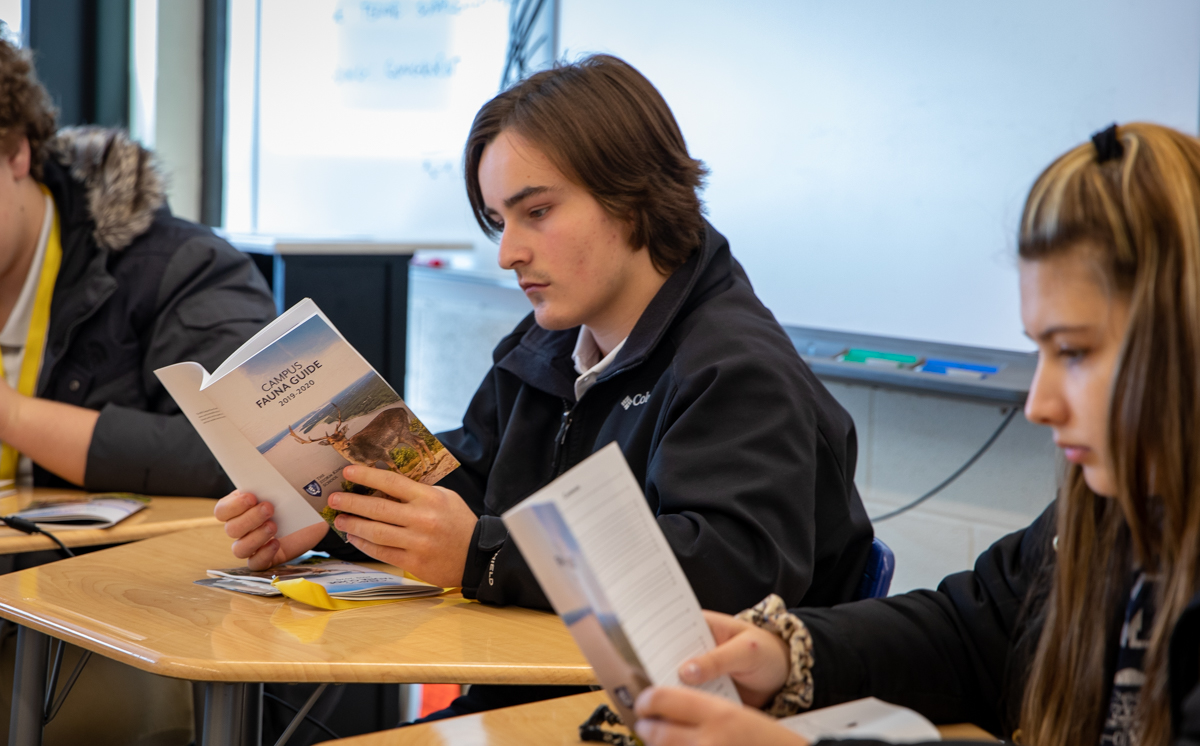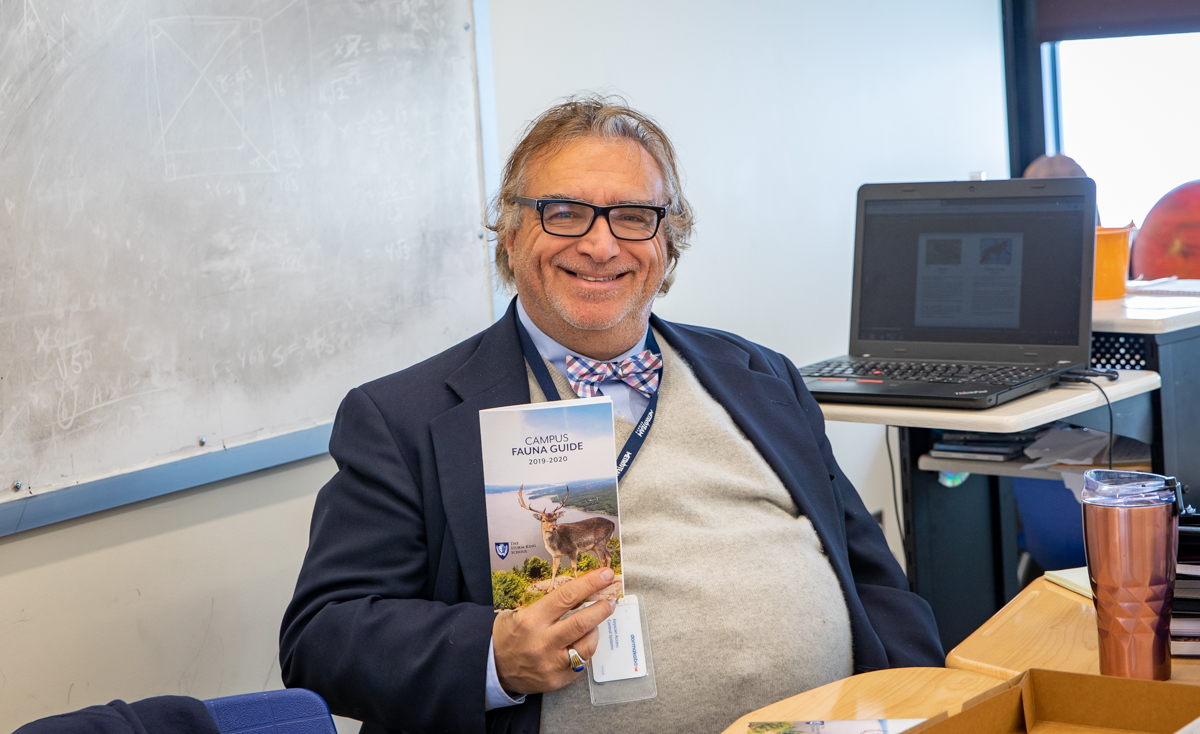Hardly a day goes by without spotting at least one species of native wildlife somewhere on the Storm King School campus. Surrounded by nature and adjacent to Black Rock Forest, the school grounds house hundreds of animals, birds, and insects and seeing them daily has become an integral part of the Storm King experience. Common animals such as squirrels, chipmunks, woodchucks, and bats abound, while larger and more diverse species including skunks, raccoons, white-tailed deer, and even an occasional black bear make their appearances from time to time.
Spotting and identifying these creatures is fun for our students and it presents many opportunities for learning both inside and outside the classroom. A good example is a project completed by Mr. Graziosi’s ASP Environmental Science class. As one of their major assignments, the students took on the challenge of creating the School’s first Campus Fauna Guide–an online and printed guide to the native species found on campus. While studying the biosphere, populations, and habitats, the class decided that creating the guide would be a good, hands-on way to apply what they learned and to share their knowledge with the rest of the school community.

“We see these animals all the time but we don’t know much about them,” explained Michael McCullough, a sophomore who worked on the project. “For those of us who are from the area, these animals are familiar to us. But I know many students from other countries who’ve never seen a skunk or a raccoon. We thought of creating this guide so that everyone can name the animals they see and learn some facts about them,” he explained.
For this first edition of the guide, the class focused on mammals–the most visible group of animals around the SKS campus. Each page provides a photo, some background information, and helpful tips on what to do if someone encounters one of these creatures. The students began by conducting online research including resources published by Black Rock Forest. “We used Black Rock’s list of mammals native to the Forest to determine which species should appear in the guide,” explained Mr. Graziosi. “The class divided the list of mammals among themselves; then each was responsible for gathering the information needed and for crediting their sources. The next step was to refine and edit the information according to our page template and to find a suitable photo. While all of this was going on, one student also helped to design the cover.”

“Pulling together the information about each animal was a great learning experience for the students on several different levels,” commented Mr. Graziosi. “They not only learned facts about their mammals, but they took their ideas and created a useful, finished product. They got a taste of how to write up information for a research project and learned the importance of citing their sources in an appropriate way. Working together with SKS’ Communications Office on the design and the final product, they also gained insight into what it takes to publish a finished booklet. The project was an example of experiential learning at its best and I’m very proud of my students,” continued Mr. Graziosi.

“I enjoyed doing the research about my animals but citing all of our sources was hard. Mr. G helped us to format all of them the right way at the end of the book, and now I can see why it’s so important,” commented sophomore Jack Kidd. Junior Maya Graumlich was very pleased when she saw the finished guide. “We talked about it a lot in class, and we did a lot of research, but it was hard to picture what the guide would look like when it was finished. It really looks nice and I can’t wait to show it to my family,” she said. According to Mr. Graziosi, the guide’s first edition is only the beginning: “It is my hope that we can continue to expand the project in the coming months and years by adding sections on reptiles, amphibians, birds, and insects. With all of this wonderful nature surrounding us, and with the help of resources like Black Rock Forest, the sky’s the limit.”
Many thanks go out to the students who worked on the project: Maya Graumlich ’21, Jack Kidd ’22, Igor Klimtsov ’20, Michael “Mikey” McCullough ’22, and Jenna Smith ’20.


